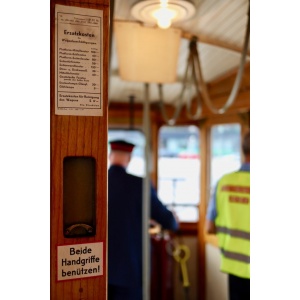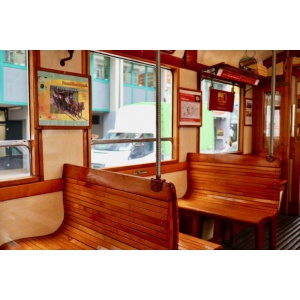Vienna’s Tramwaymuseum the spot to be for technology lovers
Together with excellent tap water, fresh air, urban silence and Mahlzeit, Vienna’s trams are part and parcel of the list of things that make this beautiful city tick. Like most things that function almost flawlessly, it is easy to just take them for granted. The trams of Vienna have an interesting and sometimes complicated history to tell. They grew together with the city in the past 200 years, going through booms, revolutions, wars and modernizations. Here some of the early milestones of the tram system of Vienna:
- 1815 marks the appearance of the first precursor to the tram, the so-called “Stellwagen” (or “society car”), with certain routes and stops across the city.
- Between 1840 and 1842 a horse tramway route was operated from the Augarten Bridge to an amusement bar near the Augarten.
- October 4, 1865: The first horse tramway route was inaugurated. The route was a 4 kilometers ride from Schottentor to Hernals: Schottentor-Universitätsstraße-Alser Straße (a gate of the Linienwall was located here) – Ottakringer Straße – Taubergasse- Hernalser Hauptstraße until Wattgasse (Remise Hernals). The route still exists today in the form of the trams 44, 9, and 43. This is also considered the official founding date of the Vienna tramway.
- On January 28, 1897 the first Viennese electrical streetcar appeared on the route Praterstern – Wallgasse (today’s line 5)
- In 1907, the signs inherited from the horse tramway were replaced by a new, cleverly designed system of letters and numbers that was considered one of the best in the world and immediately provided clear guidance to identify the trams going from and to the city center and those that would unite the outer districts.
- By 1929, the transport system performance reached 650 million passengers.
- In 1943, over 730 million passengers were transported by 3472 passenger vehicles– This remains an unbroken record!
- During April 1945, Vienna’s trams stopped. Out of 3635 passenger cars, nearly 60% were destroyed or unusable. Also, many km of lines had been destroyed. After huge efforts to bring the system back to life, the first tram train drove again through ruined and occupied Vienna on April 29, 1945.
- The latest model of the tram is only 18 cm high from the ground and this makes it very valuable for people with disabilities or parents pushing baby strollers.

All these stories and many more may be found out visiting The Vienna Tramway Museum. Founded in 1966 by Helmut Portele, the museum has kept, restored, repaired and maintained the most important historical and constructively valuable vehicles for public transport in Vienna for exhibition purposes. The collection “Wiener Tramwaymuseum” is the largest and most complete collection of the world oriented on one city – the city of Vienna. (Ra)
If you want to know more about the history of the tram system in Vienna and the Tramway Museum, the museum will be part of the “Tag des Denkmals 2019” on September 29 and you can even ride one of the trams!
The Tag des Denkmals is organized by the Austrian Federal Monuments Authority (Bundesdenkmalamt – BDA). The aim of the event is to make the public aware of the importance of cultural heritage. Also to raise awareness about heritage protection and monument preservation.
https://tagdesdenkmals.at/de/programm/wien/

Make sure to check out our private tours for more information about Vienna’s history. You can also find us on Instagram.

